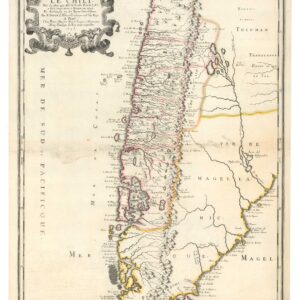Scherer’s detailed map of Lower California and adjacent mainland, based on correspondence with Father Kino.
Delineatio Nova Et Vera Partis Australis Novi Mexici
$975
1 in stock
Description
Attractive map of Lower (Baja) California and part of mainland Mexico, based on Father Eusebio Kino’s original 1685 map of the region. Scherer was one of Kino’s professors before he left for missionary work in the region.
Kino is the Jesuit Missionary credited with proving that California was not an island. But what is especially interesting about this map is that it represents a time when Kino did believe that California was an island (thus the PARS INSULAE label above Lower California). Kino’s thinking on the matter — one of the greatest cartographic mysteries in history — changed several times. He left university in Germany thinking California was a peninsula, but after arrival in New Spain in 1681, he was convinced by his colleagues in Mexico City that it was an island. It wasn’t until the end of the 17th century, after the prototype for our Scherer map was drawn, that Kino proved the peninsularity of California.
The map was also important for its detailed mapping of interior regions, showing missions, settlements, mountains, rivers, etc. It features one of Scherer’s customary striking decorative cartouches, along with a large compass rose, sea monsters, and sailing ships.
Cartographer(s):
Heinrich Scherer (1628-1704) was Professor of Hebrew, Mathematics, and Ethics at the University of Dillingen until about 1680. Thereafter he obtained important positions as Official Tutor to the Royal Princes of Mantua and Bavaria. It was during his time in Munich as Tutor to the Princely House of Bavaria that his lifetime’s work as a cartographer received acclaim and recognition.
Scherer’s Atlas Novus, first published in Munich between 1702 and 1710 and reissued in a second edition between 1730 and 1737, forms a singularly unusual, almost revolutionary work in terms of the development of European mapmaking at the beginning of the 18th century.
Condition Description
In mint condition; dark impression.
References
Burrus, Kino and the Cartography of Northwestern New Spain, p. 17, illustrated between pp. 36 and 37.
McLaughlin, The Mapping of California as an Island, no. 158.







